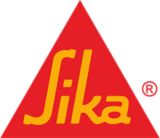How to Use Sikafloor®-132 Level Rapid: A Pro's Guide to a Smooth, Flawless Finish
You know how crucial a perfect base is. With Sikafloor®-132 Level Rapid, we’re here to help you achieve exactly that, fast-setting, smooth, level, and ready for whatever comes next. Follow this step-by-step guide to get the best results every time.
1. Get Your Substrate in Top Shape

Before you open that bag, prep is everything.
Check Your Concrete or Screed:
- Must be at least 28 days old.
- Surface should be dry, clean, sound, and free from any debris.
- There must be a working damp proof membrane.
Remove Any:
- Old adhesive residues
- Oil, grease, wax, dust
- Loose paint or flaky surface layers
- Laitance or anything that could mess with adhesion
2. Prime

For Porous Surfaces (like typical concrete or screed):
- Prime with SikaBond® PVA+.
- Mix 1 part PVA to 4 parts clean water.
- Apply a generous, even coat and let it dry completely.
- On highly porous areas, consider a second coat to avoid pinholes or debonding.
For Non-Porous Surfaces (tiles, terrazzo, dense concrete):
- Mechanically roughen the surface, grinding or scarifying is the way.
- You’re aiming for a mechanical key for the product to grip
3. Mixing
What You’ll Need:
- Clean mixing container
- Mechanical mixer with a spiral paddle
- Clean, cold water
Mix Ratio:
- 16 kg powder needs 2.6–2.8 litres of water
- Always add powder to water (never the other way around)
Mixing Method:
- Mix at medium speed until you get a smooth, lump-free consistency
- Once it starts to stiffen, don’t remix or add water
- Working time: around 5–10 minutes at +20 °C
4. Application
- Floor temperature must be 5 °C or above
- Turn underfloor heating OFF 48 hours before, and keep it off for 48
hours after
Pro Tips:
- Best applied at 2–10 mm thickness
- On large areas, work in pairs—one mixing, one applying—to stay on
those wet edges - Pour the mix on the primed surface, and spread with a steel trowel
- Add more product while it’s still wet to build thickness as needed
- The self-smoothing formula will help trowel marks disappear
- Use a spiked roller (within working time) to remove air bubbles and
enhance finish
5. Curing

- Keep the area free from drafts and direct sunlight during curing
- Premature drying = surface defects, and we don’t want that
6. Clean Up
- Clean all tools and equipment immediately with water
- Once it sets, it’s not coming off easily, so act fast
Pro Checklist Before You Start:
- Substrate clean, dry, and primed?
- Mixing gear ready?
- Temperature okay? Heating off?
- Working in a team on a big area?
- Know your working time? (~10 mins tops)

